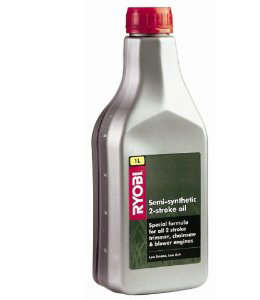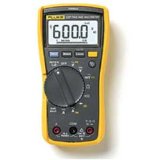


Search This Site
Search With Google
How To Mix Oil And Fuel For The Chainsaw
Moisture Meter Guide
The complete moisture meter website
The significant factor about the chainsaw 2 stroke engine is that it is lubricated by it’s own fuel system. And for this to happen, the chainsaw user needs to add a certain amount of 2 stroke engine oil to the fuel.
Adding oil to the fuel is essential, otherwise the engine will overheat and seize or break thus rendering it useless.
Adding incorrect ratios of oil to the fuel can also have diverse effects on your chainsaw and in some cases even destroying your chainsaw within minutes of operation. So adding oil to the fuel is vital, and adding the correct ratio of oil is just as important.
When it comes to owning a chainsaw, knowing all the maintenance procedures to keep it in tip top working order are an essential requirement. Knowing the mixing steps, correct mixing ratios and petrol storage are just some procedures you need to be familiar with.
Knowing how to properly mix chainsaw oil and fuel is of great importance and failing to carry out this procedure correctly can ultimately have dire consequences for your chainsaw engine.
Moisture Meter Guide 2010 Contact details:garnett65@hotmail.com
Storing Fuel
It’s easy enough to think that every 2 stroke engine is identical. But this is not the case. 2 stroke engines are not universal and each specific engine has it’s own oil and fuel mixture ratio. You need to know this mixing ratio and details can be found in your chainsaw user manual. If you can not find the mixing ratio in the handbook then check the engine housing of the chainsaw. It should be there.
In the present day chainsaw’s are manufactured to have a 50/1 mixing ratio. The engines are more efficient and cleaner running due to environmental issue. But it has not always been like this. The older style chainsaws have a mix ratio of 40/1 and certain models even 32/1 mixing ratios. The 50/1 mixing ratio happens to be the most convenient of all because 2 stroke oil is supplied in bottles of 2.6 ounces. And it is this precise amount which is the correct 50/1 mixing ration for 1 gallon of fuel. For chainsaws requiring a 40/1 or 32/1 mix ratio you have some additional measuring to do with the fuel.
50!1 mix ratio
2.6 ounces oil
1 gallon fuel
40/1 mix ratio
2.6 oz oil
0.8 gallon of fuel
32/1 mix ratio
2.6 oz oil
0.65 gallon of fuel
To Care Is To Share
Sounds strange but there is actually a huge difference between new fuel and fresh fuel. When you fill your petrol canister with petrol and seal it, you have yourself new and fresh fuel. However storing the fuel in the canister will still keep the fuel “new” but depending upon how long it is stored for will determine whether it is fresh fuel or not. What many do not realize is that fuel actually expires and has a life expectancy of up to 6 months. After 6 months the fuel will break down and become unhealthy to use in your chainsaw.
In time when stored, fuel breaks down and loses it’s potency with it’s combustible properties. If you use old broken down fuel in your chainsaw you will experience reduced engine power and also have an excessive build up of impurities in the engine parts. In time these impurities will destroy the chainsaw engine. So do be aware that fuel has a shelf life and when you do purchase new fuel always mark the canister with the date that you bought it.
Fuel Storing Tips
Any fuel that has been sitting for 3 months or more should be thrown out. A tip here is to always start each new gardening season with newly bought fuel. Any fuel from the previous gardening system should be disposed of.
If you happen to store fuel in your chainsaw always add a fuel stabilizer which will help protect the chainsaw carburetor.
Even if you do use a fuel stabilizer with your chainsaw, still throw away the old fuel at the beginning of the season.
Correct Mixing Ratio
How To Mix The Oil And Fuel Together Properly
A pretty straight forward procedure to carry out. Done once you will be able to do it in your sleep. You need to mix the two in a separate canister. Under no circumstances should you mix the two together in the fuel tank of the chainsaw.
Always add the required amount of oil to the container first. Ensure that the container is clean.
Add the required amount of fuel to the oil in the container.
Once everything has been added, seal the container and gently swirl around until the fuel and oil are properly mixed. Never shake the container to carry out the mixing process. Always use a gentle swirling motion.
Potential Chainsaw Engine Damage
The 2 stroke engine needs to be lubricated. But too much or too little oil in the fuel can have adverse results. So it is important that you stick exactly to the correct mixing ratios. Having too much oil in the fuel mix is the least problematic of the two equations. If you have just slightly too much oil in the mix you may not even notice any difference in the chainsaw performance. Adding a lot extra oil will result in:
Smoke from the exhaust
Oil dripping out of the muffler.
A significant loss of engine power.
Rectifying these problems is simply just a case of emptying the chainsaw fuel tank and refilling with a correctly mixed fuel and oil mix.
Using too little oil in the fuel mix will result in dire consequences. Running your chainsaw without any oil will simply see the chainsaw engine destroyed in a minute or so because the piston and cylinder will overheat and seize rendering the chainsaw useless.
The most prominent sign of a chainsaw running on a fuel mix with too little oil is loss of power. If you experience this you need to act quickly. Shut the chainsaw down and add a correct oil and fuel mix before continuing using the chainsaw.
| Tramex Moisture Encounter Plus |
| Tramex Compact Wood Moisture Meter |
| Tramex Concrete Encounter Moisture Meter |
| Tramex Skipper Plus Moisture Meter |
| Tramex Roof And Wall Moisture Scanner |
| Sonin Digital Moisture Meter model 50218 |
| Sonin Digital Moisture Meter 270 model 50270 |
| Sonin Moisture Test Tool model 50210 |
| Sonin Moisture Test Meter Model 50211 |
| Oak |
| Douglas Fir |
| Beech Tree |
| Elm Tree |
| Hickory Tree |
| Maple Tree |
| Pine Tree |
| Prevent And Repair Gaps In Wooden Floorboards |
| How To Fix A Squeaky Hardwood Floor |
| How To Repair A Hardwood Floor That Has Buckled |
| Which Is The Best Firewood? |
| Concrete |
| Concrete Moisture |
| Screed Moisture Meter |
| SDS Drill |
| Belle Cement Mixer |
| SDS Drill Advice |
| Which SDS Drill |
| SDS Drill Accessories |
| Drilling Into Concrete |
| Kennedy Tool Box |
| Moisture - Basic Facts |
| Types Of Damp |
| Wet Rot |
| Dry Rot |
| Mold |
| Water Leak Detection |
| Stucco Moisture |
| Water Damage |
| Moisture And Rust |
| Moisture Damage To A Chimney |
| Wallpaper Stripper |
| Plaster Mixer |
| Why Worry About Moisture Problems |
| Does Your Home Have A Moisture Problem? |
| How To Solve Moisture Problems |
| How To Use Anti Mold Paint |
| Rising Damp |
| Condensation |
| Salt Damp |
| How To Avoid Bathroom Condensation |
| How To Remove Black Mold |
| How To Prevent Bathroom Mold |
| Soldering Kit |
| Soldering Kit Contents |
| Soldering Kit Advice |
| Bonsai Tree Classification |
| Growing Bonsai From Seed |
| Bonsai Tree Care |
| Bonsai Tree Training |
| Bonsai Tools |
| Displaying Bonsai |
| Bonsai Calendar |
| Bonsai Plants |
| The Thirsty Light Curve Moisture Meter |
| The Thirsty Light Ladybird Moisture Meter |
| The Thirsty Light Bumble Bee Moisture Meter |
| The Thirsty Light Butterfly Moisture Meter |
| Hanna Instruments |
| Agratronix Portable Coffee Moisture Tester |
| Lawn Aerator |
| Lawn Roller |
| Lawn Rake |
| Lawn Sand |
| Chainshot |
| Chainsaw Gloves |
| Chainsaw Trousers |
| Chainsaw Boots |
| Mac 4 - 20 XT Chainsaw |
| Mac 738 Chainsaw |
| Mac 842 Chainsaw |
| Mac 20X Power Chainsaw |
| Einhell BG-PC 3735 Chainsaw |
| Einhell BG-PC 4040 Chainsaw |
| Einhell BG-PC 5045 Chainsaw |
| Poulan P3314 Chainsaw |
| Poulan P4018 Chainsaw |
| Poulan Pro PP3816AV Chainsaw |
| Poulan Pro PP4218AVX Chainsaw |
| Poulan Pro PP4620AVX Chainsaw |
| Efco MT 4100 SP Chainsaw |
| Efco MT 3500 Chainsaw |
| Efco 132 S Chainsaw |
| Efco 147 Chainsaw |
| Efco 152 Chainsaw |
| Efco MT 7200 Chainsaw |
| Efco MT 8200 Chainsaw |
| Efco MT 3750 Chainsaw |
| Methods Of Obtaining Soil Moisture Levels |
| Hygrometer |
| Psychrometer |
| Rain Gauge |
| Wave Ventilation System |
| Humidity |
| Hygrometer For Keeping Reptiles |
| Humidor |
| Weather Stations |
| Musical Instrument Storage |